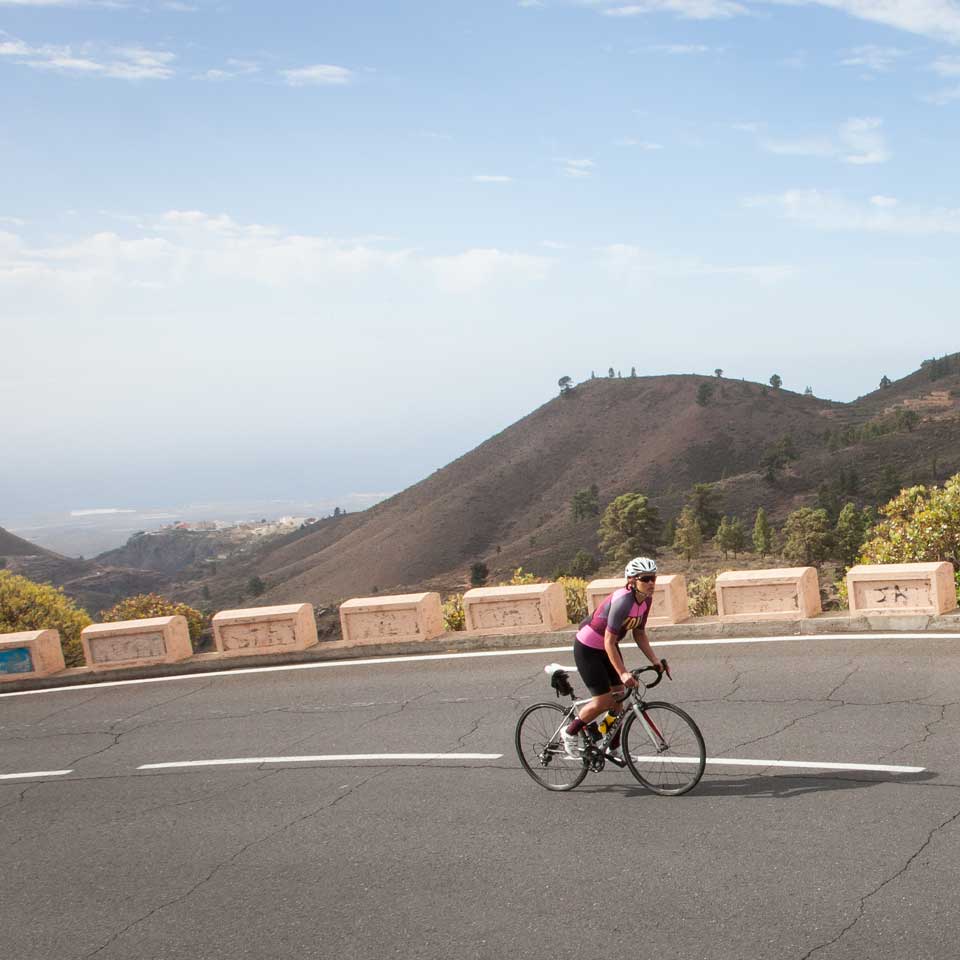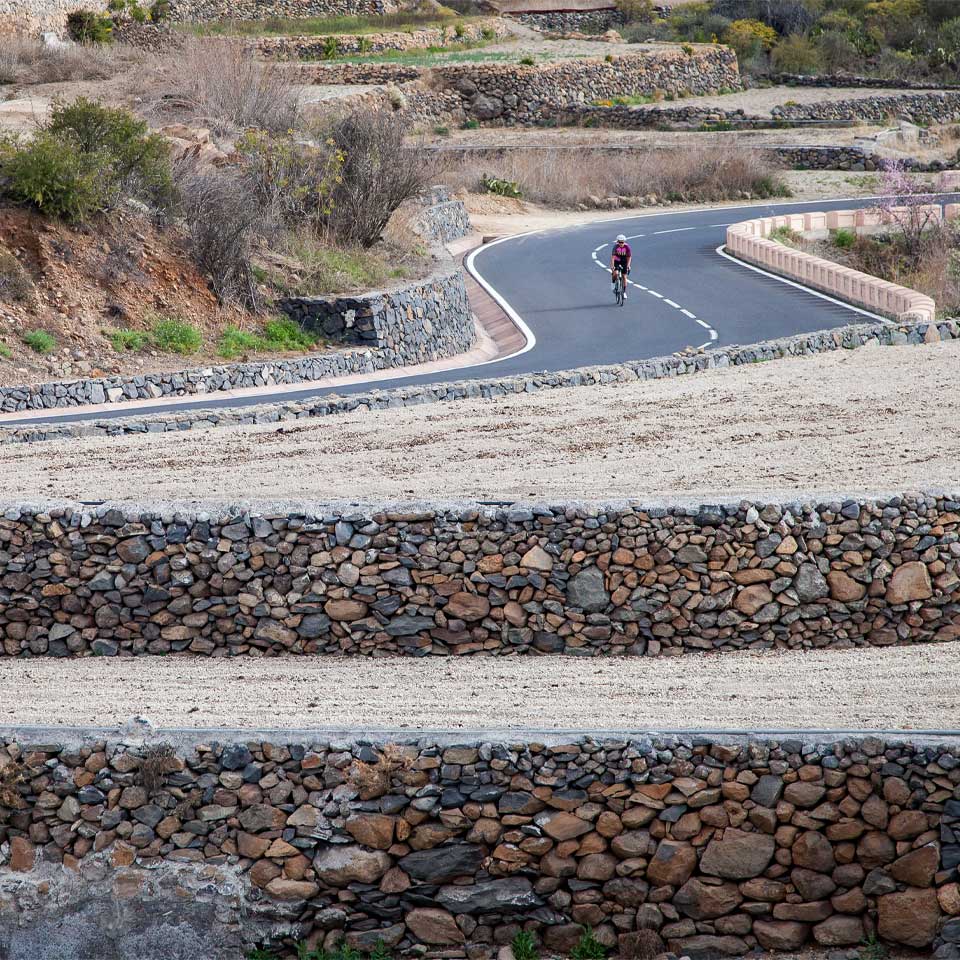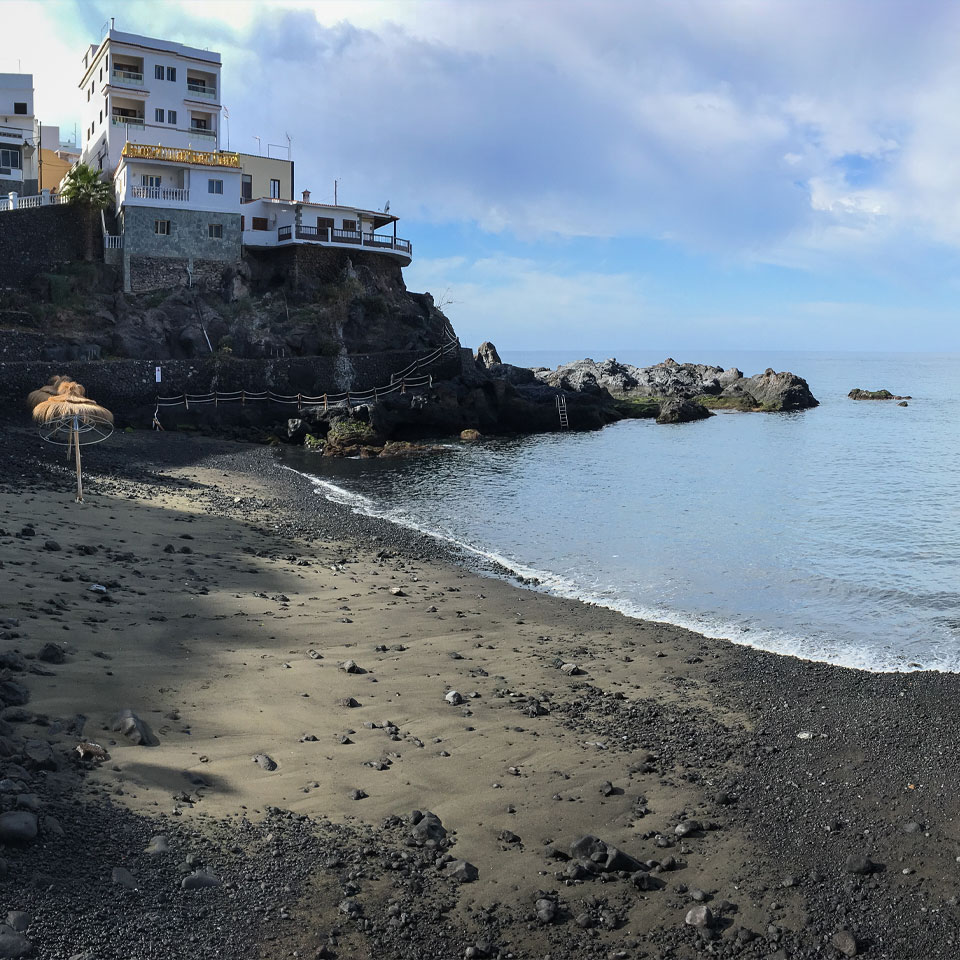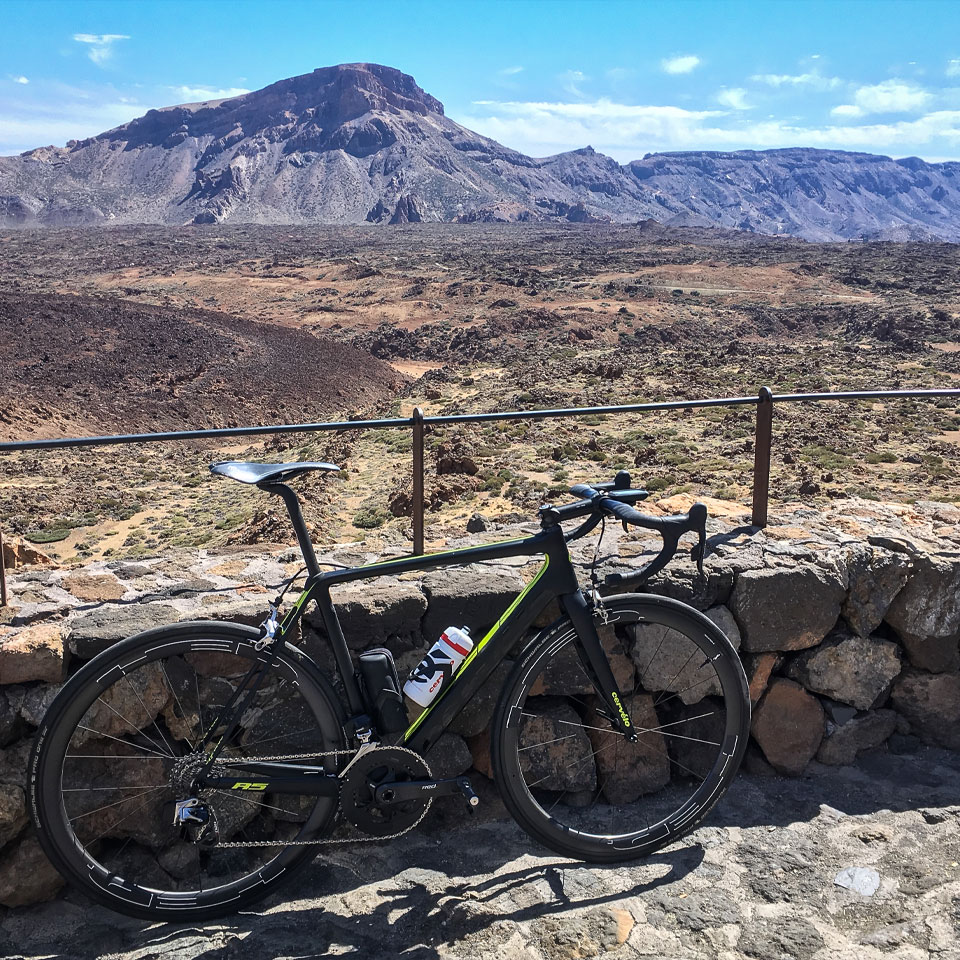
Cycling In Tenerife
Five Must Ride Climbs
For many cyclists, Tenerife is known as being Team Sky’s location of choice for training camps. Often eschewed by more casual riders in favour of Gran Canaria and Mallorca, part of its image problem is that it is viewed as a bit of a one-hill-wonder. The general consensus can be that unless you like riding up Mount Teide every day staring at your bike computer or being shouted at by Dave Brailsford, then there are better cycling destinations. However, I found that there were a good variety of climbs to be ridden all over the island. We take a look at just five of Tenerife's most notable climbs.

Granadilla de Abona to Vilaflors
The innocuous-sounding TF-51 from Granadilla de Abona to Vilaflors in the south-east of Tenerife ranks pretty highly in my list of all-time favourite climbs. For starters, there is a lovely little coffee shop right at its base, and a cafe next to the finish so it's easy to tap into the power of a cortado, and then treat yourself to a boccadillo and coke whilst you wait for your mates and refuel. Secondly, the gradient is just right, averaging around 5% so it's most definitely a climb, but one where you can get on top of the gear and choose a cadence that suits and allows a natural rhythm to be found.

Thirdly, it's long enough to weed out any climbing pretenders; it needs to be paced and respected but it’s not so long as to get tedious and finally, the scenery changes constantly so you always feel like you are making progress and actually getting somewhere rather than some climbs that make you feel like Sisyphus and his boulder (Stelvio, I’m looking at you here!).
Key Stats:
Length: 13km
Elevation gain: 700m
Average gradient: 5%
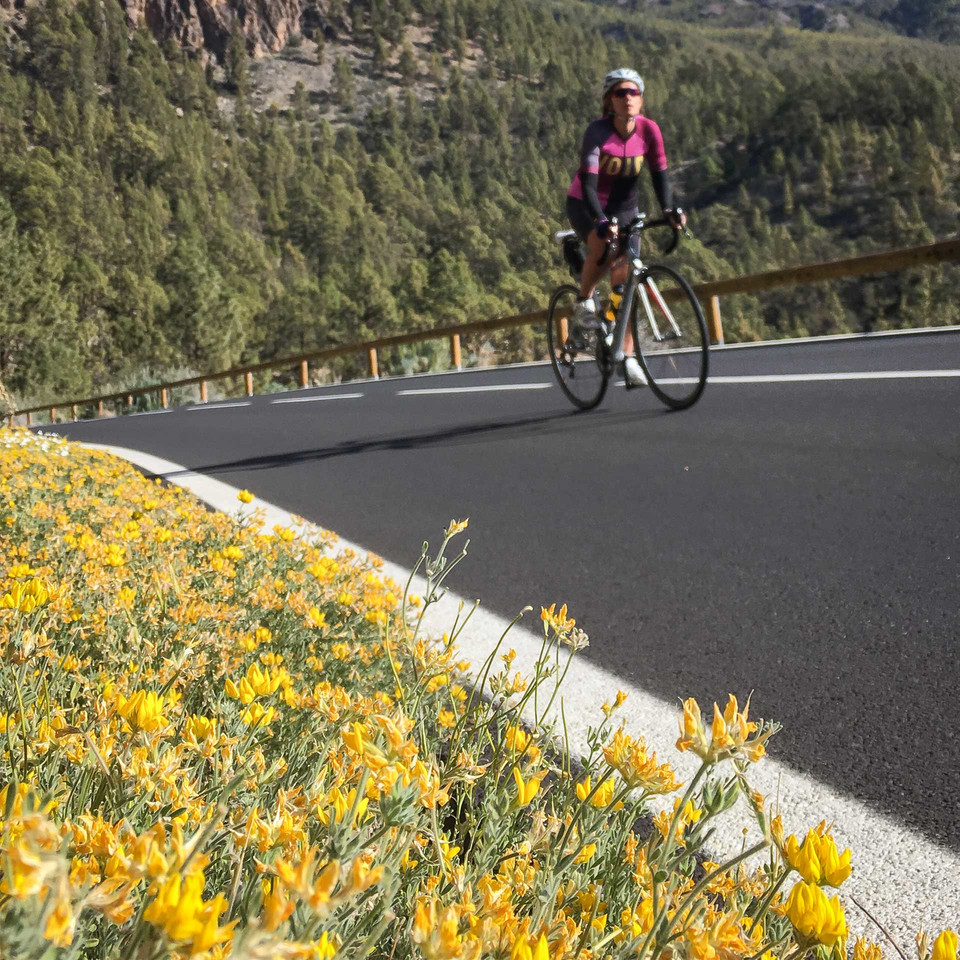
La Hildalga to Cuatro Tiempos
An average gradient of 7% doesn’t sound all that tough, but the climb from La Hildalga on the eastern coast to Cuatro Tiempos on the spine of the island doesn’t relent one iota and sticks pretty resolutely to its gradient without respite; what feels straightforward at the bottom feels a whole lot tougher 20km further into the climb.

The tarmac here isn’t quite as good as it could be either, making an ascent feel a bit grippy, but the road is very quiet, the flowers and birds plentiful, and the views out to sea beyond Candelaria make a decent distraction too. Often sheltered from the prevailing wind, it can get very warm, especially lower down before the altitude takes the edge off the temperature, so an early ascent or a cooler day is definitely to be recommended.
Key Stats:
Length: 22km
Elevation gain: 1539m
Average gradient: 7%
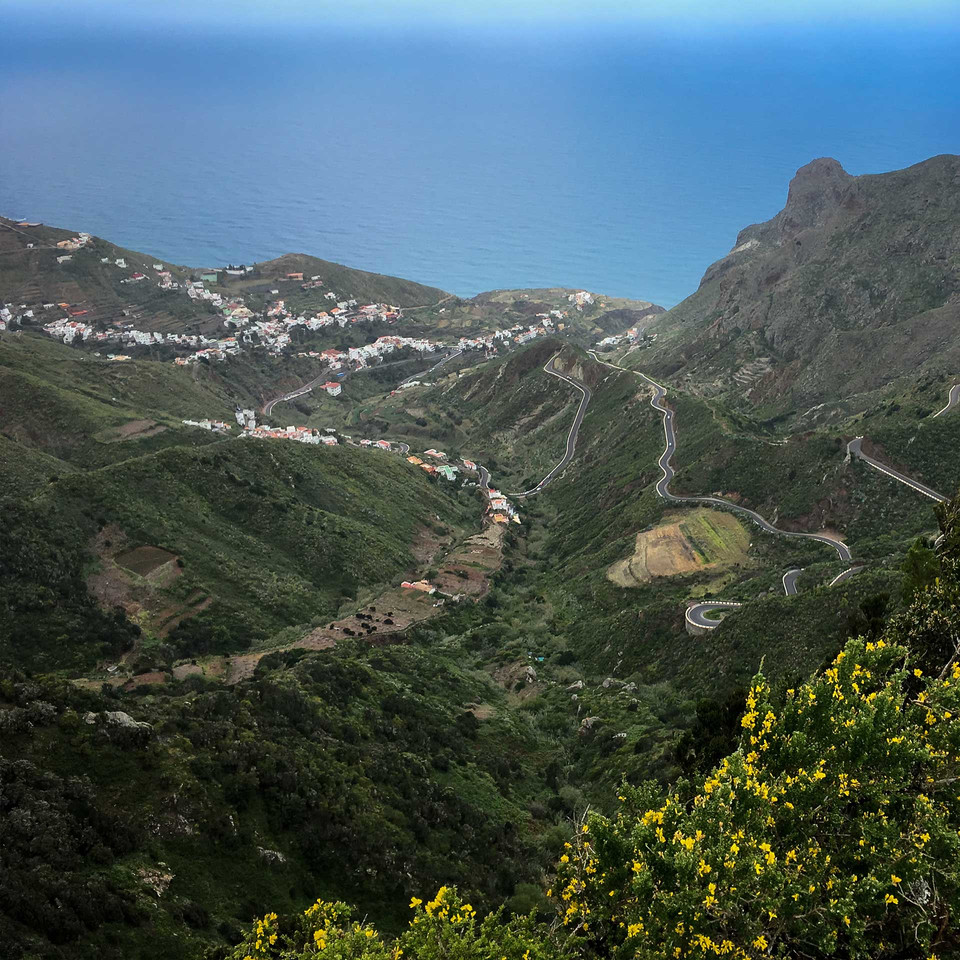
Almaciga to El Bailadero
Starting right down at sea level, with another handily placed coffee shop, the climb from Almaciga to El Bailadero up through the picturesque village of Taganana is a brute. Supposedly averaging 10%, but with many significantly steeper sections, I don’t actually recall my Garmin dropping the gradient screen into single figures at any point, although to be fair it probably spent most of its time auto-paused thinking that I’d stopped.
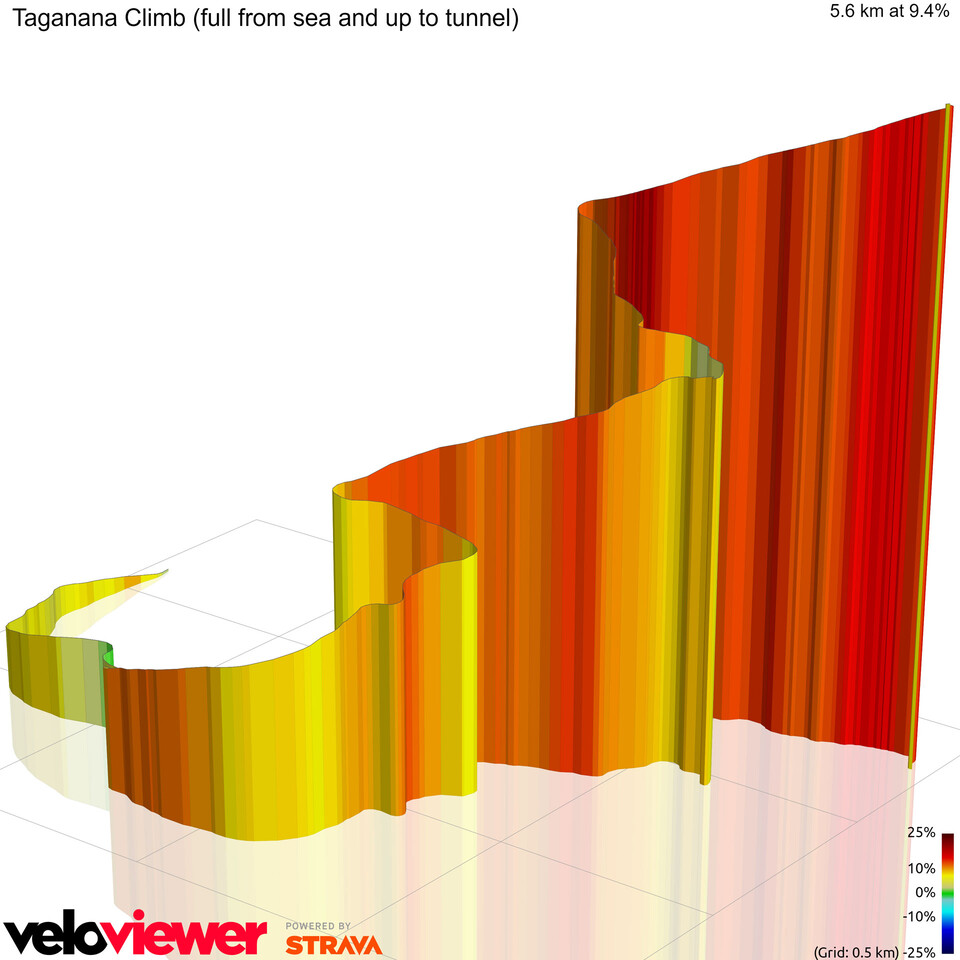
Just like the famous Sa Calobra in Mallorca, this is a down-and back-up climb, so it feels totally committing as you plunge towards the sea, knowing that every vertiginous metre of the descent has to be regained with sweat and effort. Thankfully it's only 5km long though, so keep pressing on the pedals and the tunnel that marks the end of the climb will eventually appear.
Key Stats:
Length: 5km
Elevation gain: 525m
Average gradient: 10%
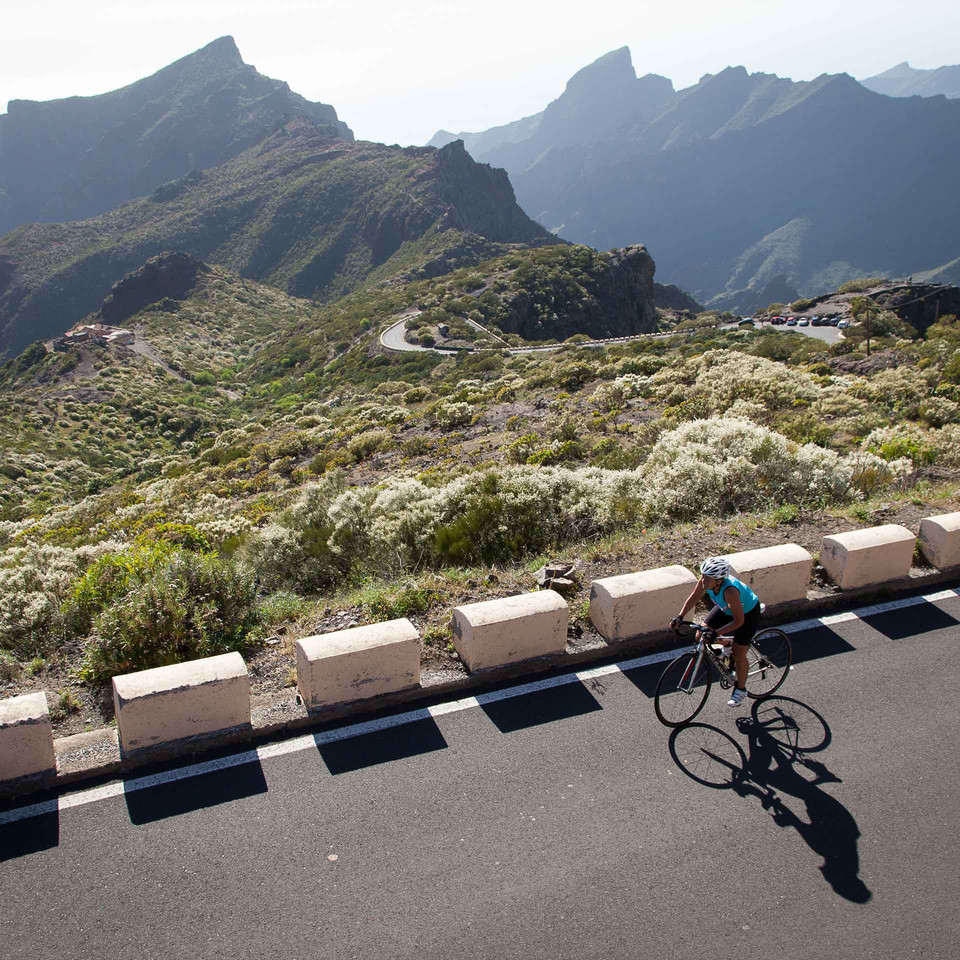
Masca
Short and very steep, the climb out of Masca on the TF-436 towards Santiago del Tiede is a true testpiece, where the Strava leaders are all nudging an average of 400 watts for their ascents, and the majority will have been followed up it by a team car or two. Sitting having lunch in the cafe at the Cruz de Hilda Mirador, the bottom and the top of the climb are visible, but the delights in between are tucked away behind a ridge and are only revealed gradually as height is gained.
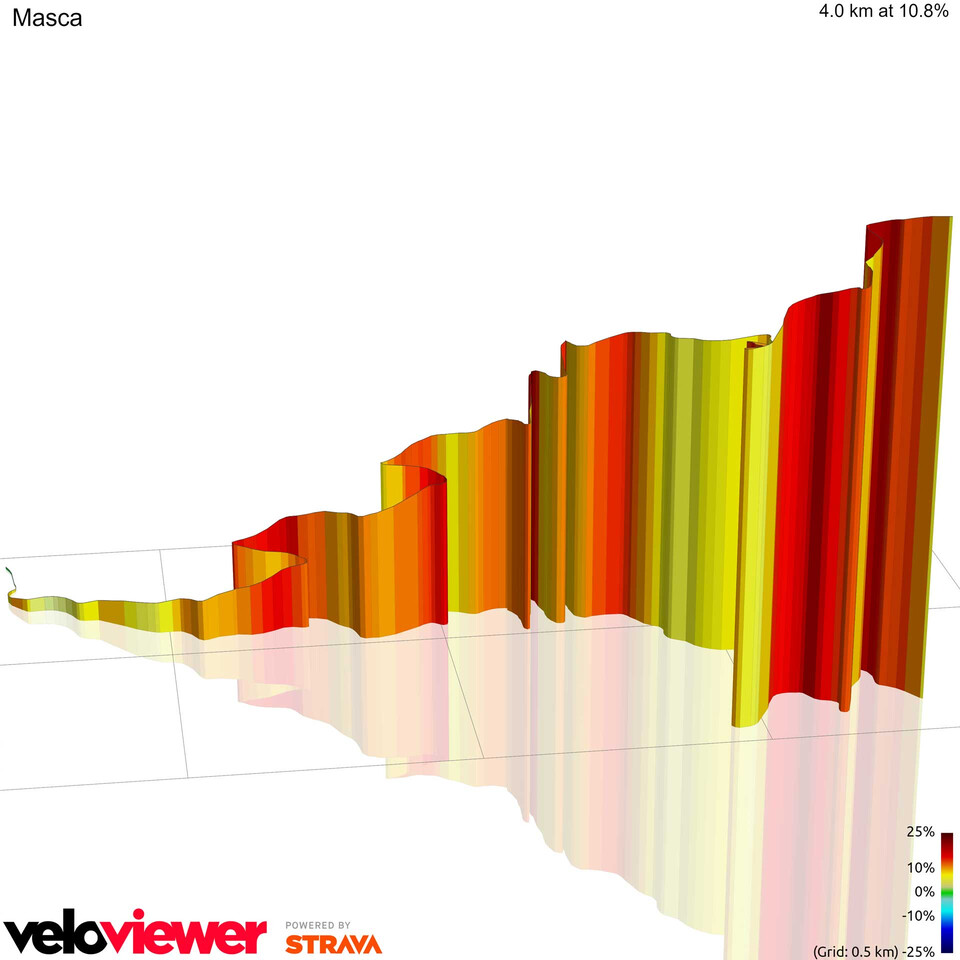
This isn’t a quiet road despite its steep narrowness and at busy times coaches getting stuck on the hairpins may impede progress (or provide a welcome excuse for a breather). With plenty of 16% and 18% ramps and little in the way of respite, it's a definite challenge just to ride it let alone put in a top time, but at just 4km long it doesn’t outstay its welcome and the views from the top can soon be enjoyed. Most importantly, a cold cerveza is only a pedal-free roll away in Santiago del Tiede.
Key Stats:
Length: 4km
Elevation gain: 441m
Average gradient: 11%
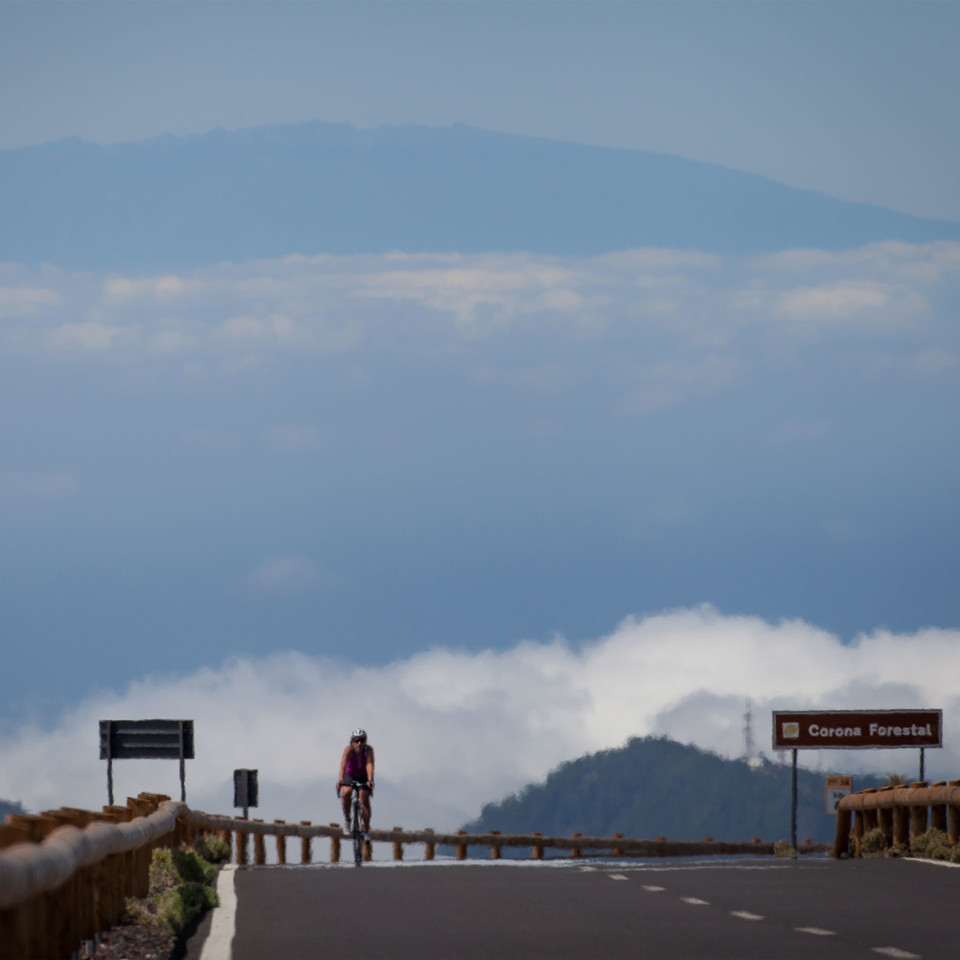
Puerto Santiago to Teide
Up until now I have been, geographically speaking, skirting around the elephant in the room, but no cycling trip to Tenerife would be complete without an ascent of Teide, and if you are going to do it you might as well do it properly: 2,350 metres of ascent in 52km, all the way from the small beach in Puerto Santiago through a changing landscape to the viewing area at the highest point of the TF-21 road.
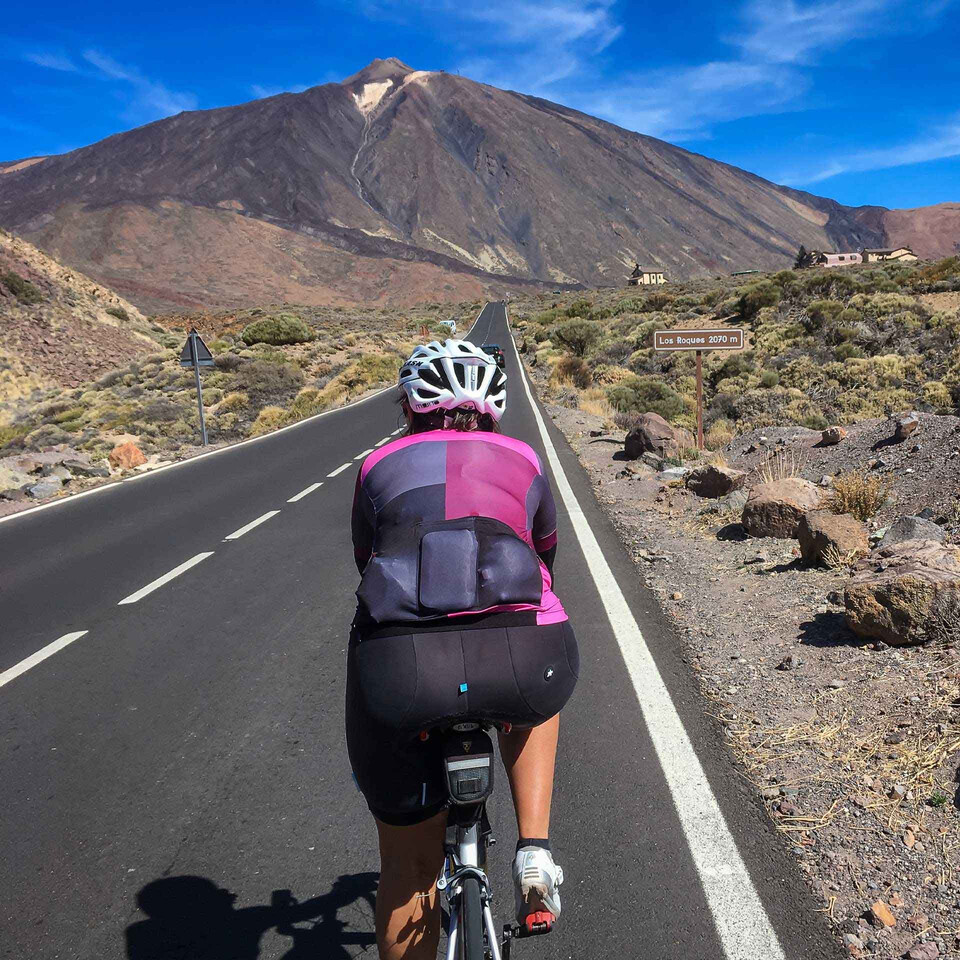
The small coastal town of Puerto Santiago quickly gives way to more agricultural land up a pleasant, steady climb on a road wide enough for the local traffic and tourist coaches to pass easily. At Tamaimo a right turn leads up into scrubland on a quieter road with open views back to the coast, and eventually on to Las Estrellas cafe. After 19km and over 1,000m of climbing, this is the perfect spot to stop for a cortado on the balcony and look back down to the sea far below.

Soon afterwards the trees start to appear, marking the start of the Parque Natural de Corona Forestal, and the summit of Teide can be seen as half distance approaches. By 30km the trees have thinned out again and the landscape morphs into the stereotypical barren, lava covered view that is most associated with Tenerife. Teide now looms like Tolkien’s Mount Doom, seemingly never getting any closer, but everpresent all the same, until the gradient rewards with a few kilometres of flattish road cut through the middle of a lava field.
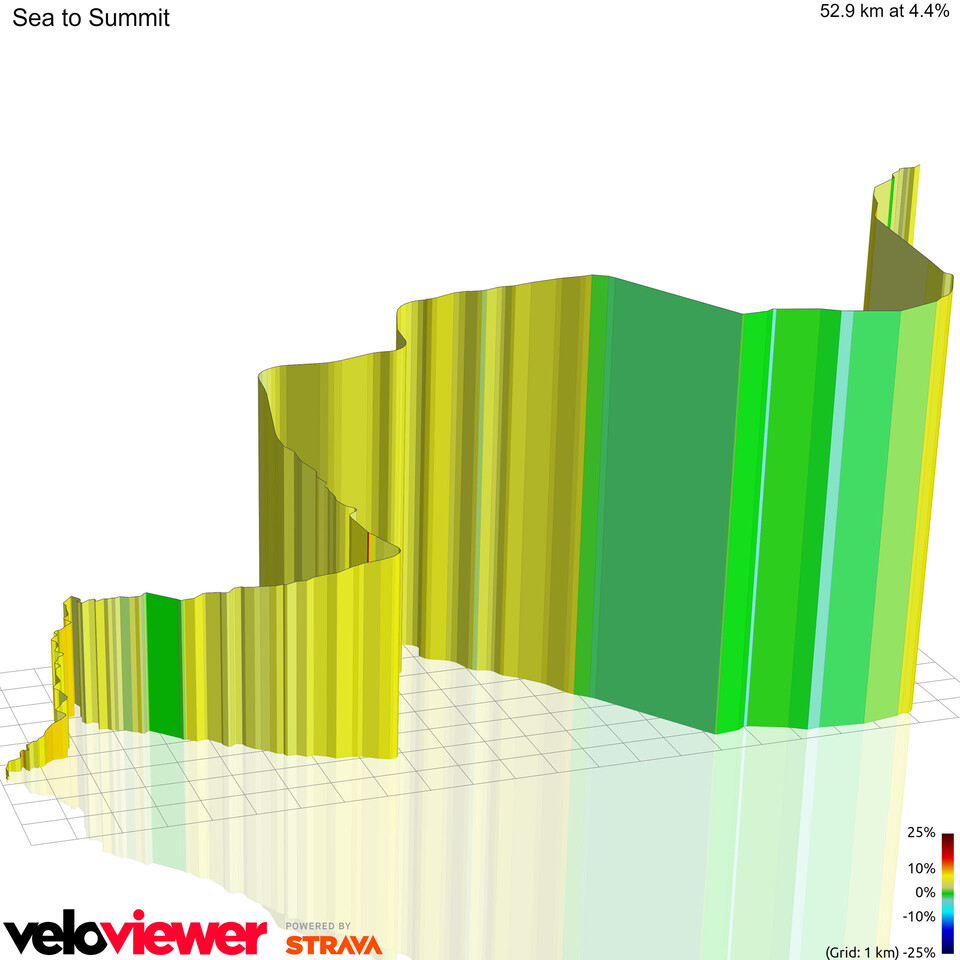
Having joined the TF-21 the route continues to roll with a distinctly uphill bias before kicking steeply up towards the Hotel Parador of Team Sky fame. Whilst a stop here is tempting, especially given the now tangible effects of altitude, it is probably wiser to push on for the final 6km to the top and save the coffee and cake as a reward on the way back down. The road summit is marked by a small car park with a view over Las Canadas, the floor of the ancient caldera an impressive reminder that the entire climb has been up the side of a volcano.
Key Stats:
Length: 53km
Elevation gain: 2,350m
Average gradient: 4%
I’d suggest that whilst Tenerife doesn’t have the cycling infrastructure, cafes and choice of terrain that Mallorca does, or the accessible variety of Gran Canaria, it is still a very viable option for a bit of warm winter riding on quiet roads. Certainly by changing hotels every couple of nights I had access to a wide range of routes and climbs, barely touched the same road twice and saw every corner of the island.






